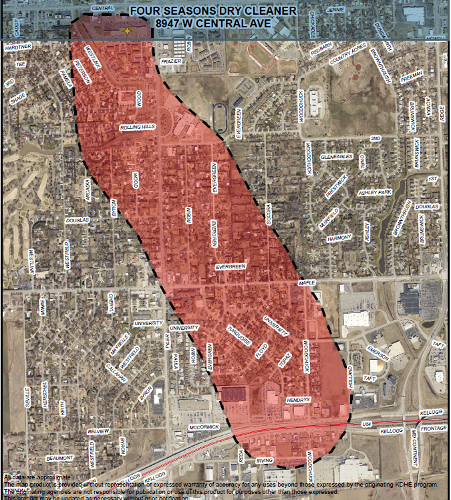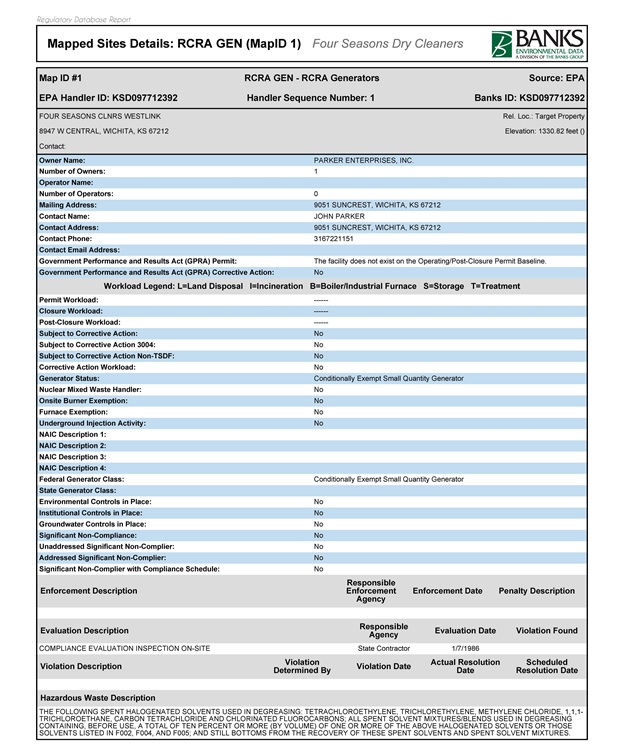A public meeting was held in Wichita, Kansas on Thursday, April 10, 2014 to discuss potential health risks associated with groundwater contamination that originated from an old dry cleaning facility. The Kansas Department of Health and Environment (KDHE) informed residents of the site history and how the contamination originated. Many homes in the impacted area rely solely on groundwater wells to provide their water and currently do not have access to the public water supply. Some residents in the affected area have been instructed not to drink their well water due to the toxic chemical known as tetrachloroethylene exceeding safe drinking limits. More tests are needed to fully determine the plume boundary, but studies up to this point indicate that the toxic chemical is migrating in a southwestern direction from the source.
According to Bob Jurgens of the KDHE, “KDHE first discovered the solvent in a monitoring well at 7920 West Kellogg Drive in late 2009. Asked by a crowd member why residents weren’t immediately notified of the pollution, Jurgens said the site was placed on a list of areas that needed further investigation and that funding used for testing private wells wasn’t made available through the KDHE’s Dry Cleaning Remediation Program until earlier this year.”
It is not known when the water became contaminated, but the chemical may have been present in the groundwater for decades. Many residents are wondering what sort of health issues could arise due to chemical exposure or ingestion. The chemical is believed to be carcinogenic and can cause serious health concerns. The long-term plan is to provide public water to residents in the affected area, but for now KDHE is providing residents three 5-gallon bottles of water per week.
The contamination discovered in 2009 at 7920 West Kellogg Drive is believed to have migrated about 1.5 miles south/southwest from the dry cleaning facility, which helped KDHE determine the approximate plume boundary. Further testing is needed to determine if the plume boundary extends further south than current estimates. Without successful remediation, it is likely that the contaminants could migrate further south with groundwater flow.
In light of concerns voiced by citizens, we looked into the Banks Environmental database to see what information we had on the Four Seasons dry cleaning facility and the chemicals used at the facility. Listed below is a record derived from our Kansas Environmental Database Report, which lists all chemicals that were reported on site.
Additional Resources:
Jordan Schmidt 
Editor
jschmidt@banksinfo.com
Image credit: KWCH


